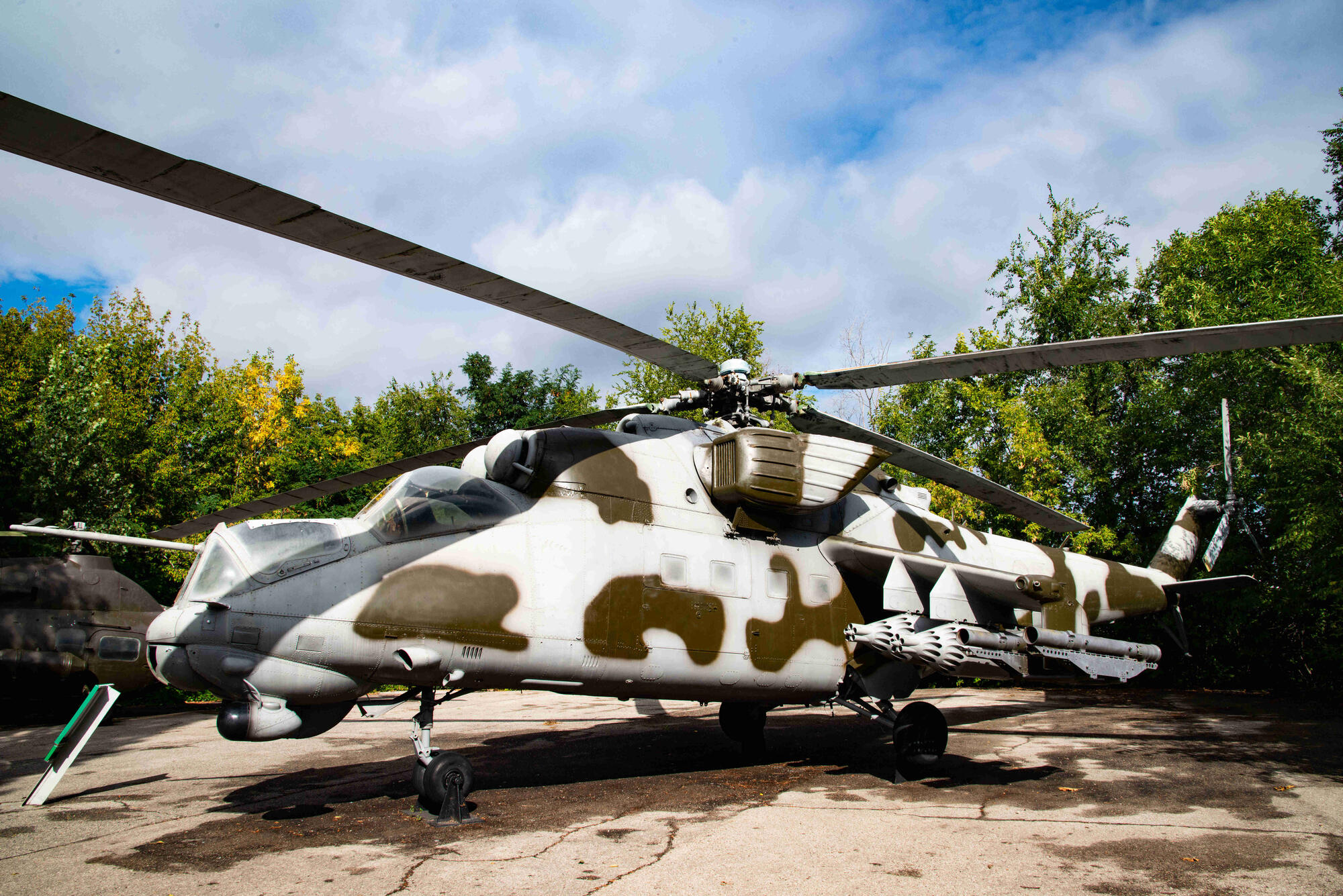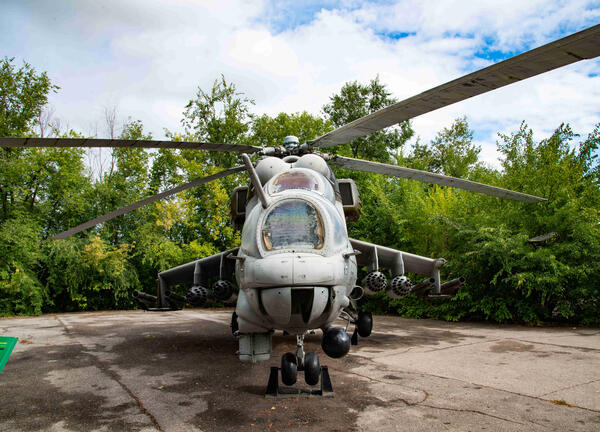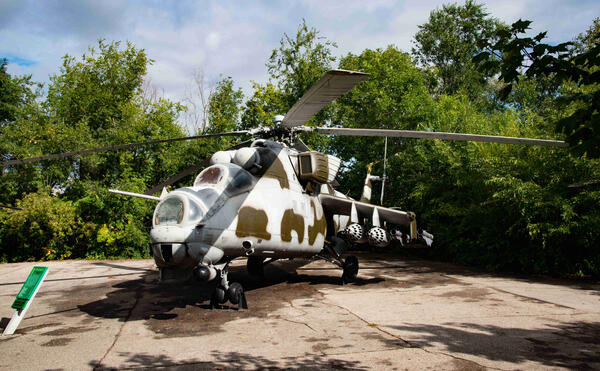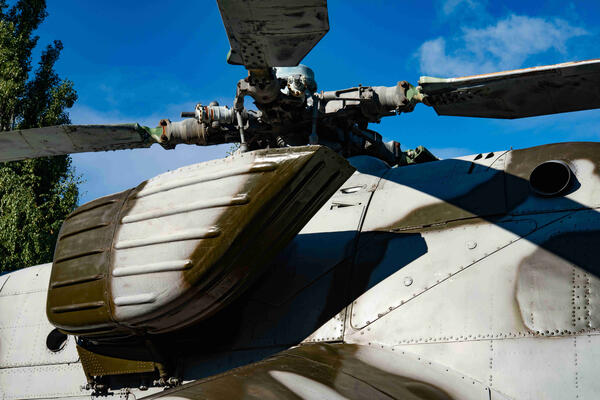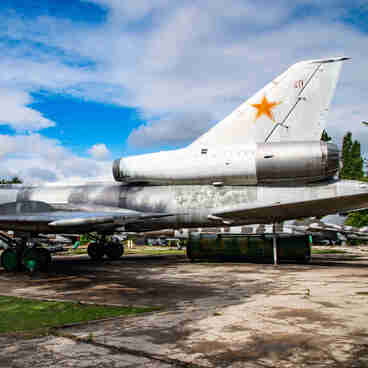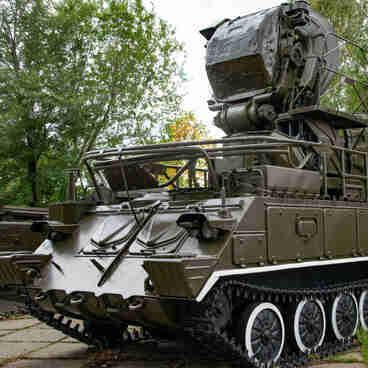The Mi-24V attack helicopter with a limited troop-transport capability was developed in the Design Bureau of the Moscow Helicopter Plant. It entered service with the Soviet Army in 1976.
The helicopter had a conventional single-rotor configuration with a tail rotor. It was fitted with retractable tricycle landing gear with a single nose wheel. Crew members consisting of the commander, navigator-operator and flight mechanic were positioned in separate compartments. Up to eight paratroopers could be housed in the cargo cabin.
The Mi-24V helicopter was armed with a YakB-12.7 four-barrel rotary machine gun. A feature of this Mi-24 modification was the Shturm-V anti-tank missile system. Its guided missiles were fitted on launchers that were installed in pairs. The helicopter was also armed with other weapons: pods with unguided aircraft missiles, aerial bombs, and multi-purpose helicopter gondolas (casemate-style positions for a gunner).
The Mi-24V was mainly intended for aviation and fire support of ground forces both directly on the battlefield and in tactical depth, by engaging ground, small-sized, armored mobile objects and other enemy targets.
The Mi-24 helicopters surpassed all types of foreign-made attack helicopters in terms of their armament and combat load weight. They had an advanced rotor system, and were distinguished by high maneuverability, which made it possible to perform complex flying maneuvers.
The Mi-24s were successfully used in military operations in Afghanistan, and widely used in other military conflicts. The Mi-24 helicopters proved to be particularly effective in rescue operations of downed aircraft and helicopters and in evacuations of wounded in combat conditions.
Until the end of the 1980s, these transport and combat helicopters had been produced by the Rostov Helicopter Production Association and Progress Arsenyev Aviation Company. In total, about 1000 Mi-24V helicopters were built from 1976 to 1986.
Presently, the Mi-24 is the main attack helicopter of the Russian Army. It is in service in more than 50 countries worldwide.
The helicopter had a conventional single-rotor configuration with a tail rotor. It was fitted with retractable tricycle landing gear with a single nose wheel. Crew members consisting of the commander, navigator-operator and flight mechanic were positioned in separate compartments. Up to eight paratroopers could be housed in the cargo cabin.
The Mi-24V helicopter was armed with a YakB-12.7 four-barrel rotary machine gun. A feature of this Mi-24 modification was the Shturm-V anti-tank missile system. Its guided missiles were fitted on launchers that were installed in pairs. The helicopter was also armed with other weapons: pods with unguided aircraft missiles, aerial bombs, and multi-purpose helicopter gondolas (casemate-style positions for a gunner).
The Mi-24V was mainly intended for aviation and fire support of ground forces both directly on the battlefield and in tactical depth, by engaging ground, small-sized, armored mobile objects and other enemy targets.
The Mi-24 helicopters surpassed all types of foreign-made attack helicopters in terms of their armament and combat load weight. They had an advanced rotor system, and were distinguished by high maneuverability, which made it possible to perform complex flying maneuvers.
The Mi-24s were successfully used in military operations in Afghanistan, and widely used in other military conflicts. The Mi-24 helicopters proved to be particularly effective in rescue operations of downed aircraft and helicopters and in evacuations of wounded in combat conditions.
Until the end of the 1980s, these transport and combat helicopters had been produced by the Rostov Helicopter Production Association and Progress Arsenyev Aviation Company. In total, about 1000 Mi-24V helicopters were built from 1976 to 1986.
Presently, the Mi-24 is the main attack helicopter of the Russian Army. It is in service in more than 50 countries worldwide.
